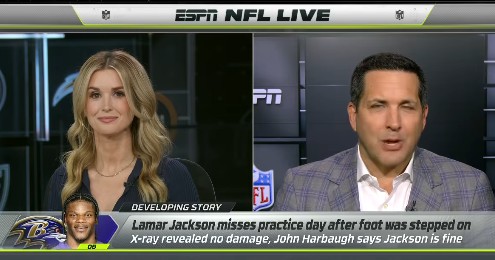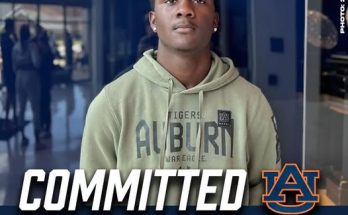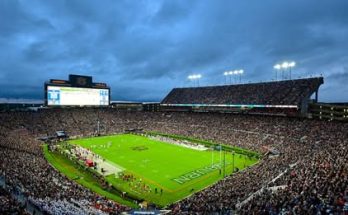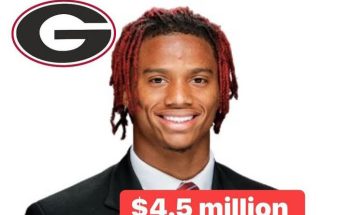Adam Schefter’s reports often carry weight in the NFL landscape, and when he raises a red flag, people pay attention. That is precisely what happened when Schefter sounded the alarm regarding Baltimore Ravens quarterback Lamar Jackson’s foot injury. On the surface, the Ravens organization has tried to downplay the severity of the issue, with team officials suggesting that the franchise quarterback is simply being held out for precautionary reasons. But insiders know that when a player of Jackson’s stature, athletic ability, and importance to a team’s entire offensive philosophy suffers any kind of lower-body injury, it deserves to be scrutinized much more deeply than the standard response of “just day-to-day.” Jackson is not an ordinary quarterback who can be replaced by the next man up without consequence. His presence on the field is not only vital to the Ravens’ hopes of competing in the AFC, but it also impacts the way opposing defenses prepare, the way Baltimore’s offensive line protects, and the way their receivers find space down the field.
Schefter’s tone suggested there is real reason to be concerned that the Ravens may not be giving the public the full picture of what is happening behind closed doors. Teams in the NFL are notorious for downplaying injuries, sometimes until the moment when the truth can no longer be hidden. A “tweak” becomes a high ankle sprain. A “bruise” is later revealed to be a fracture. For Ravens fans, the thought of Jackson’s foot injury being worse than advertised raises haunting memories of late-season collapses that have occurred when he has not been at full strength. The Ravens have built their roster and offensive identity around his dual-threat abilities, and while backup quarterbacks like Tyler Huntley have proven to be capable, there is a massive drop-off when Jackson is not the one under center.
To understand the seriousness of this situation, one must appreciate how Lamar Jackson’s game is dependent on his mobility. He is not just a passer who occasionally scrambles. He is an electric runner who changes the geometry of the field. Defenses are forced to assign spies, adjust their fronts, and dedicate resources to stop him from breaking big plays outside the pocket. The Ravens’ entire rushing attack, including the success of their running backs, thrives because of the threat of Jackson keeping the ball on option plays. If his foot is compromised, not only is his ability to sprint at full speed in jeopardy, but so too is his ability to plant, cut, and avoid defenders in the backfield. A seemingly minor foot injury for most quarterbacks might not drastically change their game, but for Jackson, it could neutralize the very thing that makes him special.
The timing of this report is also critical. Baltimore has entered the 2025 season with immense expectations. The front office has made moves to bolster the receiving corps, improve the offensive line, and give Jackson every reason to succeed as both a passer and runner. For the first time in years, many analysts considered the Ravens to be legitimate contenders not just for the AFC North but for the conference title itself. Schefter’s report, however, threatens to change the narrative. If Jackson is less than 100 percent, all of the Ravens’ careful offseason planning could unravel. The difference between a healthy Jackson and a hobbled one is the difference between Baltimore being a true Super Bowl contender and merely a playoff hopeful trying to hang on in a competitive division.
Ravens fans have seen this before. In 2021, Jackson’s ankle injury derailed what was shaping up to be a strong season. The Ravens went from controlling their playoff destiny to missing the postseason entirely. In 2022, a knee injury forced him out late in the year, and Baltimore’s offense sputtered in his absence. Each time Jackson goes down, the conversation about durability reemerges, as does the larger debate about whether a dual-threat quarterback can sustain success long-term in the NFL. While his style of play has revolutionized the position and inspired countless younger quarterbacks, the physical toll cannot be ignored. Every cut, every sprint, every juke puts strain on the lower body. A foot injury, even a subtle one, is amplified by the sheer volume of explosive movements Jackson performs every week.
Schefter’s sources may be pointing to more than just a lingering soreness or precautionary rest. The phrasing of “might be worse than the Ravens are letting on” implies that internal evaluations have raised concern, even if the team has not made those worries public. One possibility is that the Ravens fear aggravation of the injury if Jackson returns too quickly, which would not only compromise the current stretch of games but potentially sideline him during the most critical part of the season. Another possibility is that diagnostic imaging has revealed something more serious than a bruise or sprain. Fans often do not realize that even small bone injuries in the foot, such as stress fractures, can linger for months and make it nearly impossible for a player like Jackson to perform at his peak.
The Ravens’ decision-making process will also be under scrutiny. Head coach John Harbaugh has always been protective of Jackson, but he also knows the pressure of the NFL season waits for no one. If Baltimore rushes Jackson back before his foot is fully healed, they risk repeating the mistakes of previous years when he played injured and the offense never found its rhythm. On the other hand, keeping him sidelined for too long in a competitive AFC North could cause the Ravens to lose ground in the playoff race. It is a delicate balancing act between short-term competitiveness and long-term health, and Schefter’s warning suggests the Ravens may already be struggling with that balance.
From the player’s perspective, Jackson’s competitive drive cannot be underestimated. He has built his career on silencing doubters, on proving that a quarterback can dominate the league with his legs as well as his arm. He will not want to sit out unless absolutely necessary, especially given the scrutiny he has faced in previous years about missing time. Yet, there is also the reality that every snap taken at less than full strength risks both his performance and his long-term durability. The Ravens’ medical staff will need to step in and make objective decisions, sometimes against the wishes of their star player, to protect both his career and the team’s investment.
What adds another layer to this story is Jackson’s contract situation. Having signed one of the richest deals in NFL history, his health is directly tied to the franchise’s future. The Ravens did not commit that kind of money just for Jackson to be an occasional star. They need him on the field consistently, performing at a high level, for many years to come. A lingering foot injury not only threatens the 2025 campaign but could raise questions about how Jackson’s body will hold up over the life of the contract. These are uncomfortable conversations for fans and executives alike, but they cannot be ignored when a player is both the face of the franchise and one of its largest financial commitments.
The larger NFL community will also be watching closely. Jackson is one of the league’s most exciting stars, and his absence would change the competitive balance of the AFC. Teams like the Kansas City Chiefs, Buffalo Bills, and Cincinnati Bengals have long been viewed as the powerhouses of the conference, but the Ravens with a healthy Jackson were considered a legitimate challenger. If Baltimore is forced to play significant stretches without him, those rivals gain a clearer path. Moreover, from a broadcasting and fan engagement perspective, Jackson’s highlight-reel plays are among the most marketable in football. The league has a vested interest in seeing him stay healthy.
The uncertainty of this situation also sparks debate among analysts. Some will argue that the Ravens must diversify their offense to reduce their reliance on Jackson’s legs, leaning more heavily on running backs and short-passing schemes to protect him. Others will insist that to neuter Jackson’s running threat is to rob him of what makes him elite. The truth likely lies somewhere in the middle. Baltimore has tried in recent years to expand its passing game, but as long as Jackson is the quarterback, his running ability will be central to their attack. That means protecting his foot health is not just about recovery from this injury but about building strategies to prevent future ones.
Ultimately, Schefter’s report serves as a warning bell. It is not definitive proof that Jackson’s season is in jeopardy, but it highlights the possibility that Baltimore’s optimism may be premature. For fans, it is a reminder to temper expectations and recognize the fragility of an NFL season. For the Ravens, it is a test of depth, coaching adaptability, and medical decision-making. For Jackson, it is another chapter in a career that has been both spectacular and shadowed by injury concerns.
If the Ravens can navigate this challenge wisely, giving Jackson the time he needs to fully recover while keeping themselves competitive, they will be positioned for a strong run once he is healthy. But if they ignore the warning signs, they risk repeating the mistakes of the past, watching their season slip away while their star quarterback battles through pain. As Schefter has suggested, the story here is not about what the Ravens are saying publicly, but about what might be happening privately. And in the NFL, what is left unsaid often matters most.



